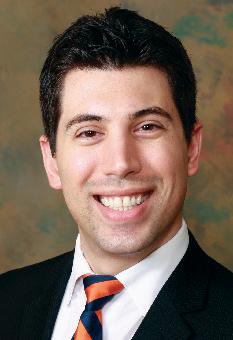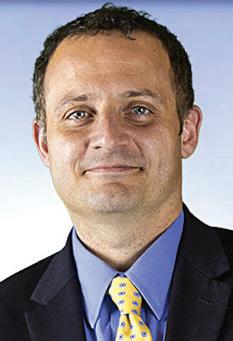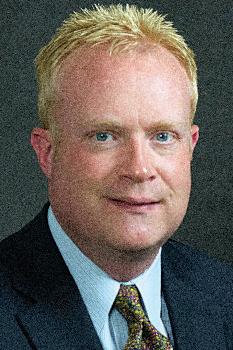
7 minute read
Immigration LawCommittee
How Immigration Can Address the Shortage of Medical Professionals in the United States

The COVID-19 pandemic exposed significant shortages of medical professionals in the U.S. health system. As the U.S. fought the high number of COVID-19 infections, the number of patients needing medical attention rose substantially and exposed gaps and shortages in trained medical professionals. These shortages highlight the importance of well-trained healthcare staff, and U.S. immigration laws offer tools that can be used to address the urgent need for trained medical professionals.
In light of this, the American Medical Association (AMA) requested that the U.S. Department of State and U.S. Citizenship and Immigration Services (USCIS) take critical steps to expand the foreign-trained physician workforce to meet the increasing demands on the American health system during the COVID-19 pandemic. The AMA stated in an urgent bulletin, in pertinent part:
I am writing to strongly urge the U.S. Department of State (DoS) to work with the U.S. Department of Homeland Security (DHS) to ensure that non-U.S. citizen international medical graduates (IMG) are not negatively impacted by the COVID-19 pandemic and can either continue, or begin, to serve a vital role in caring for patients during the COVID-19 pandemic. Prior to the COVID-19 pandemic, the U.S. was already facing a serious shortage of physicians largely due to the growth and aging of the population and the impending retirement of many physicians. Non-U.S. citizen IMGs [international medical graduates] play a critical role in providing health care to many Americans… During this pandemic it is even more critical that our non-U.S. citizen IMGs have the support they need from the Administration to provide healthcare to those patients battling COVID-19.1
There have long existed different options for temporary visas for foreign trained doctors and medical personnel, including the H-1B and J-1 visas. However, these options have drawbacks for physicians since they are temporary visas and depend on a U.S. employer or agency as the sponsor. Likewise, the United States has long held a path to residency through the National Interest Waiver specifically designed for physicians (Physician NIW). 8 C.F.R. § 204.12 (2023). Nurses and physical therapists are designated as Schedule A are occupations, for which the U.S. Department of Labor determined there are insufficient workers in the United States. 20 C.F.R. § 656.5 (2023). However, these opportunities also suffer from significant drawbacks. Specifically, in addition to other requirements, the Physician NIW has historically taken some time to obtain and further requires that most applicants obtain an attestation from a federal agency or the department of health stating that the work is in the public interest in addition to a commitment to full-time clinical practice in an underserved area for a period of five years. 8 C.F.R. § 204.12 (2023). Schedule A occupations still require that U.S. employers file a petition which can be time consuming and very costly for the employers.

In the alternative and based on the continued demand, the U.S. can address the increasing needs of Americans with foreign medical professionals interested in immigrating to the U.S. with the EB-2 National Interest Waiver (EB-2 NIW) category. The EB-2 NIW is an excellent path to U.S permanent residency for those professionals with a doctorate or master’s degree or a bachelor’s degree and at least five years of progressive experience in the field of expertise, which can show they will benefit the interest of the U.S. by being allowed to enter the U.S. job market. 8 C.F.R. § 204.5(k)(2) (2023).
Many foreign medical professionals will easily meet or exceed these educational or experience requirements. Many medical professionals are U.S.-educated as well or already have U.S. licenses but lack the immigration status to remain in the U.S. to benefit Americans.
The traditional EB-2 requires sponsorship by an employer, which can be very lengthy and costly. The company must undergo a labor certification process before the U.S. Department of Labor, to prove that not enough U.S. workers are available to fill the offered positions. After the labor certification process is concluded, the employer must file a petition with the USCIS. The entire process often lasts over two years, which for many U.S. employers is too long to wait for a position to be filled. Conversely, an EB-2 NIW can be obtained in as little as six months. Because individuals cannot petition on their own with the Traditional EB-2 and obtaining a labor certification can be a lengthy process, many foreign nationals choose to obtain their own EB2-NIW.
The USCIS employs a three-part test to determine if an EB2NIW should be granted. An applicant must demonstrate:
1. That their proposed endeavor has both substantial merit and national importance;
2. That they are well-positioned to advance the proposed endeavor; and
3. That, on balance, it would be beneficial to the United States to waive the job offer and labor certification requirements.
Matter of Dhanasar, 26 I&N Dec. 884 (AAO 2016). As to the first prong, an applicant must show that his or her work is related to an important national goal and that their work is beneficial to the United States. USCIS will consider its potential impact on the country, both in geographic terms and more broadly. Health professionals can be doctors, nurses, or work in research or public health initiatives.
Coping With Losses at Trial

hose of us who watched basketball great, Michael Jordan, play during his college and professional career were witness to his amazing skillset on the court as a shooting guard and small forward. We remember his extraordinary ability that earned him the nickname “Air Jordan” where he would drive down the court, leap from the top of the free-throw line, soar through the air, and dunk the ball through the hoop. A brief listing of Jordan’s top accomplishments would include the following: Rookie of the Year; Five-time NBA MVP; Six-time NBA champion; Six-time NBA Finals MVP; Ten-time All-NBA First Team; Nine time NBA All-Defensive First Team; Defensive Player of the Year; 14-time NBA All-Star; Three-time NBA All-Star MVP; 50th Anniversary All-Time Team; Ten scoring titles – an NBA record; Retired with the NBA’s highest scoring average of 30.1 points per game; and NBA Hall of Fame inductee.1
You didn’t have to be a fan of “His Airness,” the Chicago Bulls, or the University of North Carolina Tar Heels to appreciate Jordan’s athleticism and drive to win. However, in his book, Driven From Within, 2 Jordan put his winning career in perspective: “I’ve missed more than 9,000 shots in my career. I’ve lost almost 300 games. 26 times I’ve been trusted to take the game-winning shot and missed. I have failed over and over and over again in my life…” Despite his skill, athleticism, accomplishments, and accolades, Jordan knew what it was like to lose.
If you’re a trial lawyer or trial paralegal, you will lose some cases; it’s almost certain. Losing is a part of life. We like to talk about our wins, forget our losses, and put on the best face we can muster; that’s just how we are. But that doesn’t change the realities of life. We hate losing. Losing isn’t fun. Losing is hard. We try to minimize the risk of losing and maximize our chances of winning by gathering certain evidence, hiring the right experts, navigating the litigation process, researching case law, preparing our client(s), presenting the evidence to a judge or jury in a light most favorable to our client’s position, and making our arguments and objections where appropriate along the way. But there are no guarantees. And losing is especially heartbreaking when that loss comes after investing our time, talent, and treasure in a case we believe in, a case we have worked on for an extended period – sometimes many years. The scenario is familiar to those of us who do trial work: We did the best we could, but the judge ruled against our client; or the jury returned a verdict for the opposing party.
Following a loss at trial, oftentimes we’re left with a mixture of feelings such as shock, disbelief, frustration or anger, resentment, shame, hopelessness, and/or depression. Moreover, many times, our clients look to us for help to make sense of it all, to put it in perspective, to ease the suffering. This can compound the anxiety and stress we already feel, especially when there are questions that we just can’t answer. We’re left to cope with the outcome and these feelings and emotions.
TSo, how can we cope with losing a case, help our clients, and move forward to face the next case with fresh vision, renewed purpose, renewed passion, and a solid commitment to preparing our next case for trial? I sat down with attorney, licensed clinical social worker, and psychodramatist, Michael Traynor, Esq.,3 to address these issues and get some perspective with the goal of improving the mental health of trial team members after such a loss.
Q: Is there a way to mentally prepare for this type of loss?
A: Trial is risk-taking, adversarial warfare. I would not recommend preparing for a loss any more than a boxer stepping in the ring should be prepared to lose. Deal with it if and when it occurs.
Q: What are some coping mechanisms we can employ after experiencing a loss at trial?
A: When loss occurs, it’s really too late to look for new self-care mechanisms. Please have good self-care mechanisms in place beforehand. Common examples of good self-care include being with family and friends where you can freely vent and process loss, exercising your faith or engaging in your religious or spiritual beliefs, meditating on positive things, mindfulness, getting good consistent exercise, maintaining healthy good nutrition, or getting a massage to help us relax when we’re stressed and tense. Also finding creative or artistic outlets, cooking, gardening, being in movement somehow.
Another good self-care mechanism is to turn to a friend who has experienced a similar loss or faced a similar problem and ask, “How did you handle this? What did you find helpful in coping with this?”
Q: Recognizing that everyone is different, how long should we allow ourselves to grieve after experiencing a loss at trial?
A: I have a good attorney friend who says, “Take 24 hours to celebrate a victory and 48 hours to grieve a loss; then get back on the horse.” The paradox of mental health is that you can’t think your way to better mental health; you have to act your way into better mental health. You have to put in the work – actually do the thing that brings relief. Sitting at home in a dark room thinking about what you should have done at trial that you didn’t do, or thinking about what you did at trial that you should not have done, is not going to relieve your suffering. Get moving, step by step.
Q: Assuming that there are no appealable issues, how can we help our client(s) move forward after they’ve lost their case at trial?
A: You may have to repeat what you probably said before trial, and you may have to say this more than once. Remind them kindly, “Going into trial, you knew that there was a risk of losing, and while we can be upset about this loss, you decided to take that risk and stand up for yourself. In standing up for yourself, you were continued page







